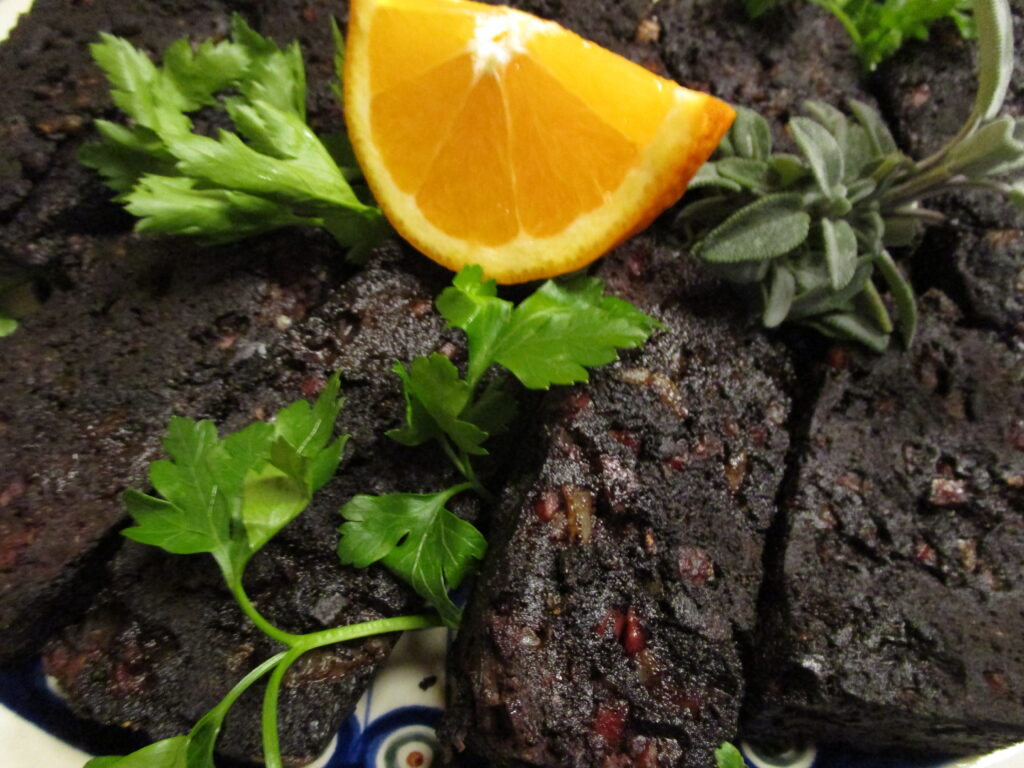
Blood Pudding
I’ve never had English blood pudding before. I’d heard of it, of course, but have never had the opportunity.
It’s not that I’d be adverse to the blood. With a German father and Czech mother, I grew up with an array of European foods, and blood sausage was one of them. Zungenwurst, or blood and tongue, became my favorite luncheon meat before I was old enough to realize that blood was actually an ingredient.
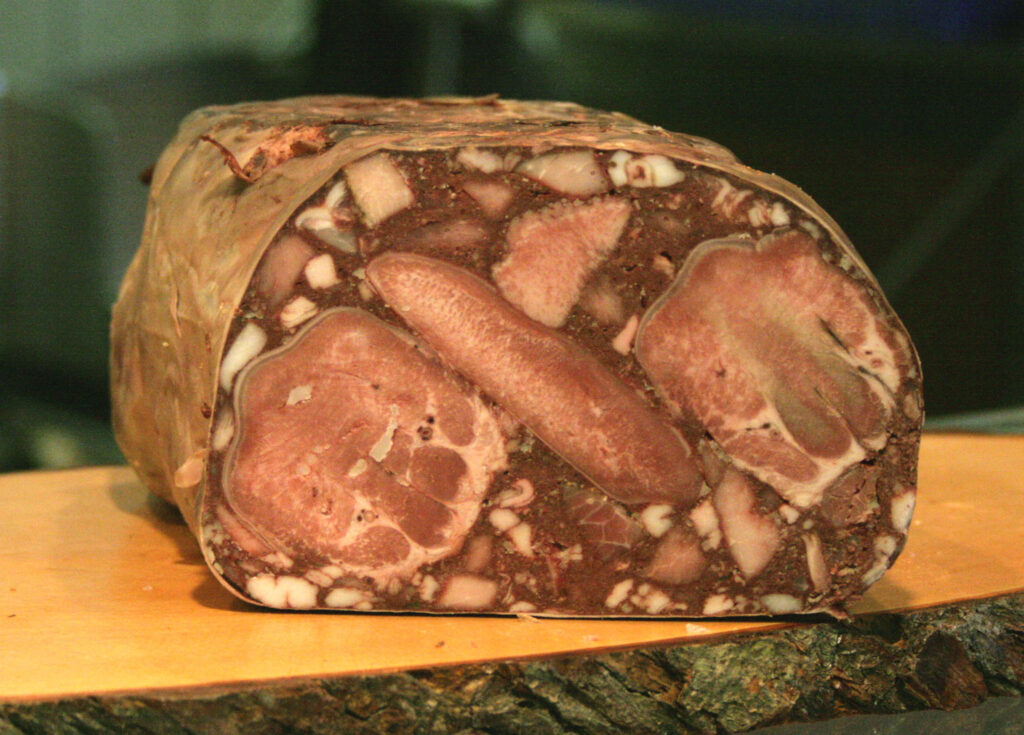
Tamorlan, CC BY-SA 2.5, via Wikimedia Commons
Then there’s Blutwurst, or blood sausage. It’s a popular in Württemberg as part of the Schlachtplatte (butcher’s platter) served at the local Besenwirtschaften, Württemberg’s temporary pubs for homemade wine. Liverwurst, a slice of pork belly, sauerkraut, and homemade bread round off the plate. This blood sausage sports a distinct nutmeg flavor and is soft enough you can spread it on your bread.
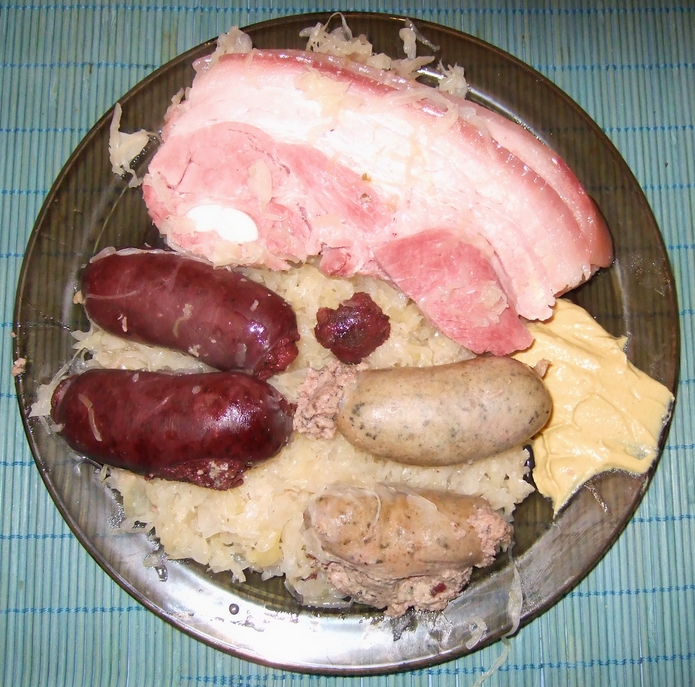
Then along came eatmedieval, an online course on medieval cooking, all based on the Christmas feast of an English bishop. The course included a recipe for bread and blood pudding. That was my opportunity – I could now make blood pudding myself!
Mom, the blood pudding was the biggest surprise!
I spread the eleven dishes we learned in the course over the twelve days of Christmas. We kicked Christmas Eve off with a rabbit stew, and then moved on to delicacies like a boar’s head, venison steaks, medieval gingerbread, and a chastelet. I prepared the blood pudding, along with a dish called goose in hochepot, towards the end. I was curious how the other members of the family would react. As Germans, their only culinary experience with blood was German blood sausage.
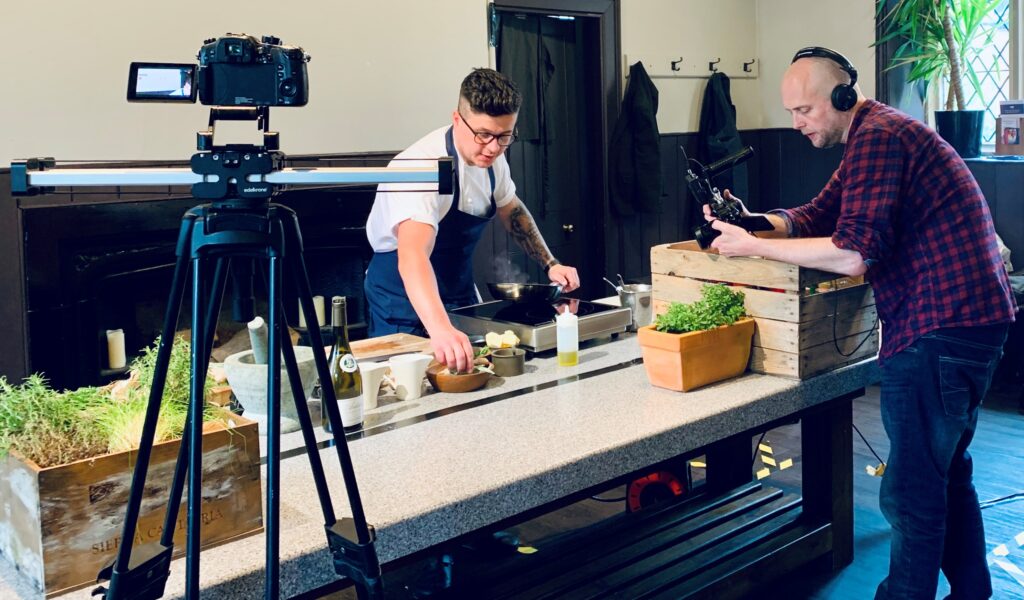
Bread crumbs
There’s a huge difference, as it turns out. Our medieval blood pudding recipe came from the Forme of Cury, the oldest known cookbook in the English language (14th century). It included bread crumbs, which made it as stiff as a meatloaf. In fact, the teacher had us frying the pieces in goose fat at the end. You could never do that with German blood sausage. I remember once, when I was too ill to get out of bed and my husband offered to cook. Don’t worry, he said. I’ll make some blood sausage pizza. The German blood sausage, which was nice and congealed while cold, liquefied in the heat of the oven. When he served me the pizza, there was blood running around the top. (Yes, I ate it anyway. And yes, I recovered too.) The medieval blood pudding would have never done that.
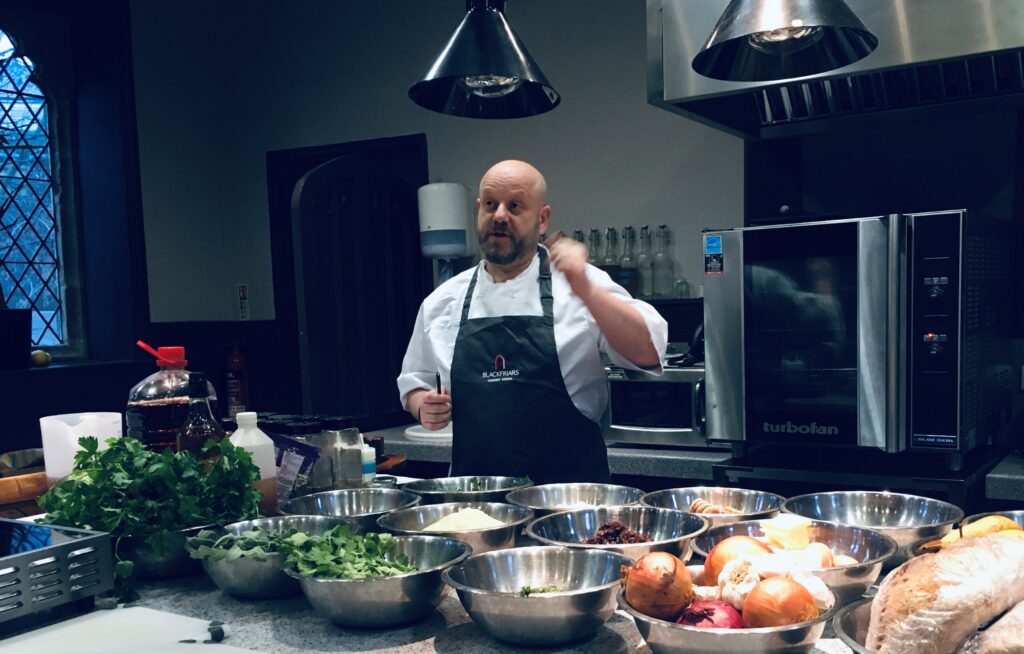
Saffron
The spices are different, too. Whereas German blood sausage contains marjoram, nutmeg, and thyme, this medieval blood pudding distinguished itself with a poudre fort, or “strong powder.” Poudre fort was a medieval spice blend, and we took our recipe from 14th-century Italian recipe collection, Libro de cucina. It contains ginger, white pepper, and saffron. Incredibly, the saffron dominated, and I mean that in a good way.
Saffron! squealed my husband. He loved the taste. I did too. This made for one of the best sausages (puddings?) I’ve ever eaten.
My 23-year-old son agreed. He said that of all the things I made for my medieval cooking class, the blood pudding was the biggest surprise. And my 21-year-old declared English blood pudding to be every bit as good as German blood sausage.
With best wishes for post-Brexit Anglo-German relations, let me wish you, as the Germans would say it, einen guten Rutsch ins Neue Jahr (a good slide into the New Year).

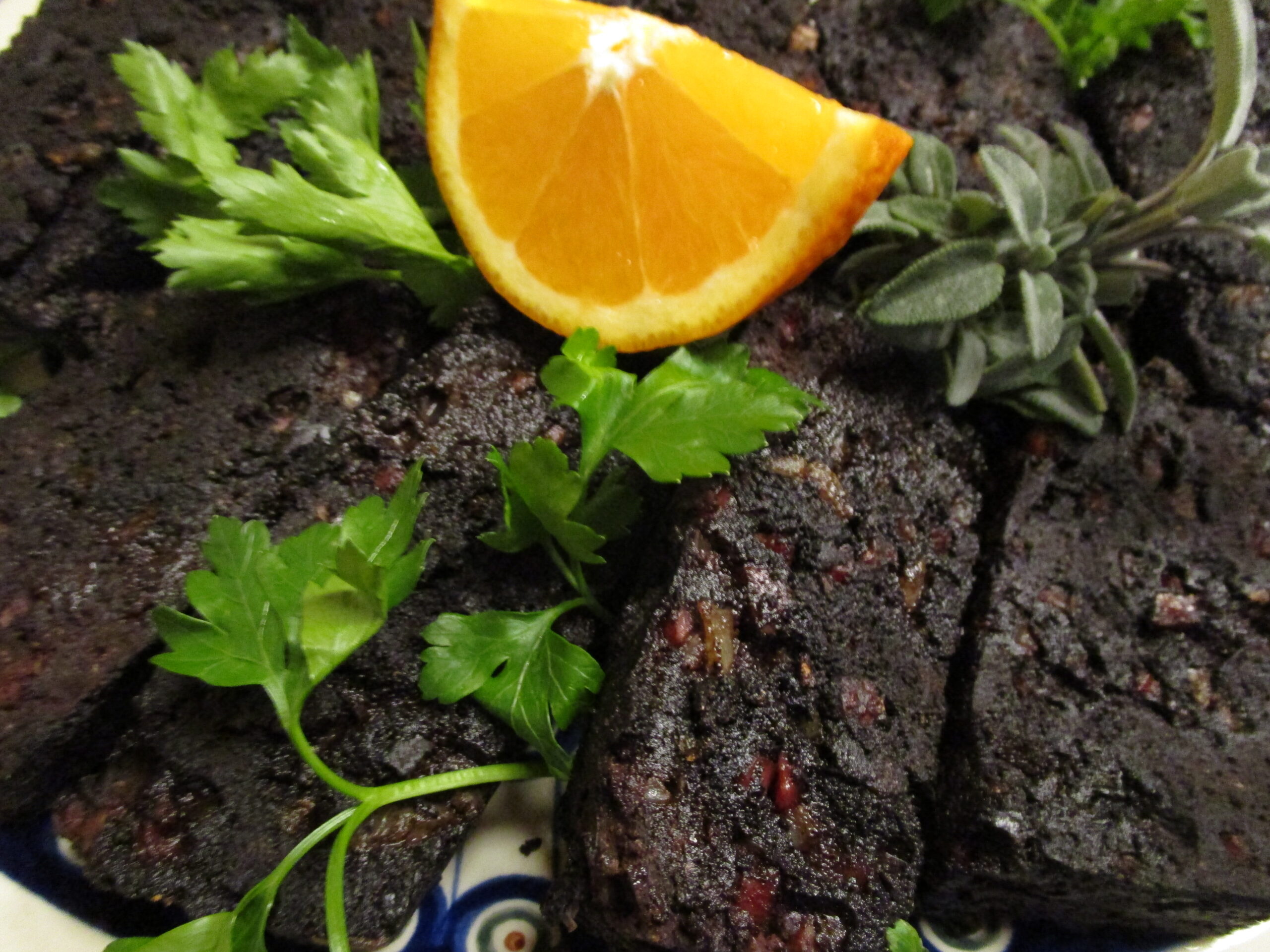
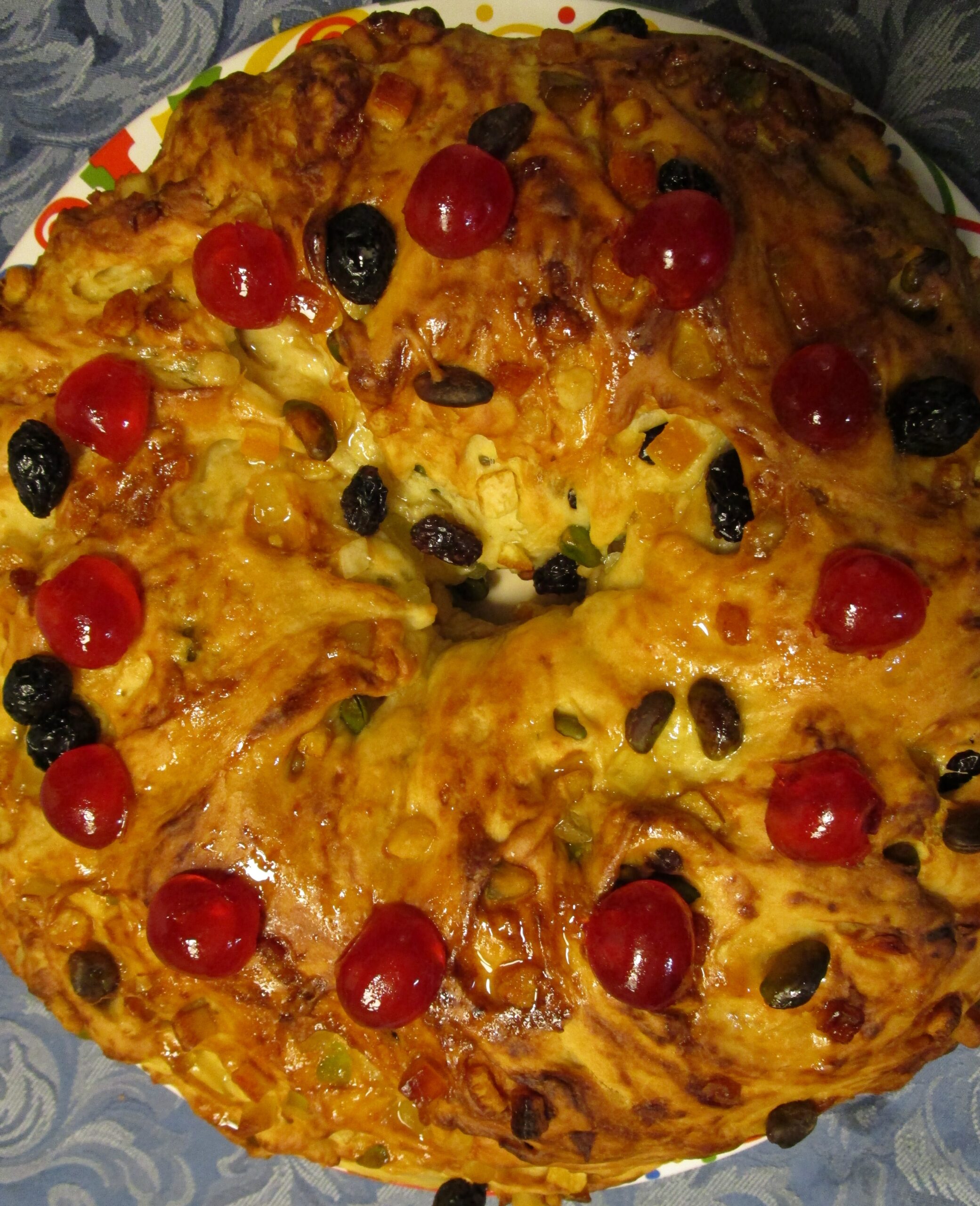
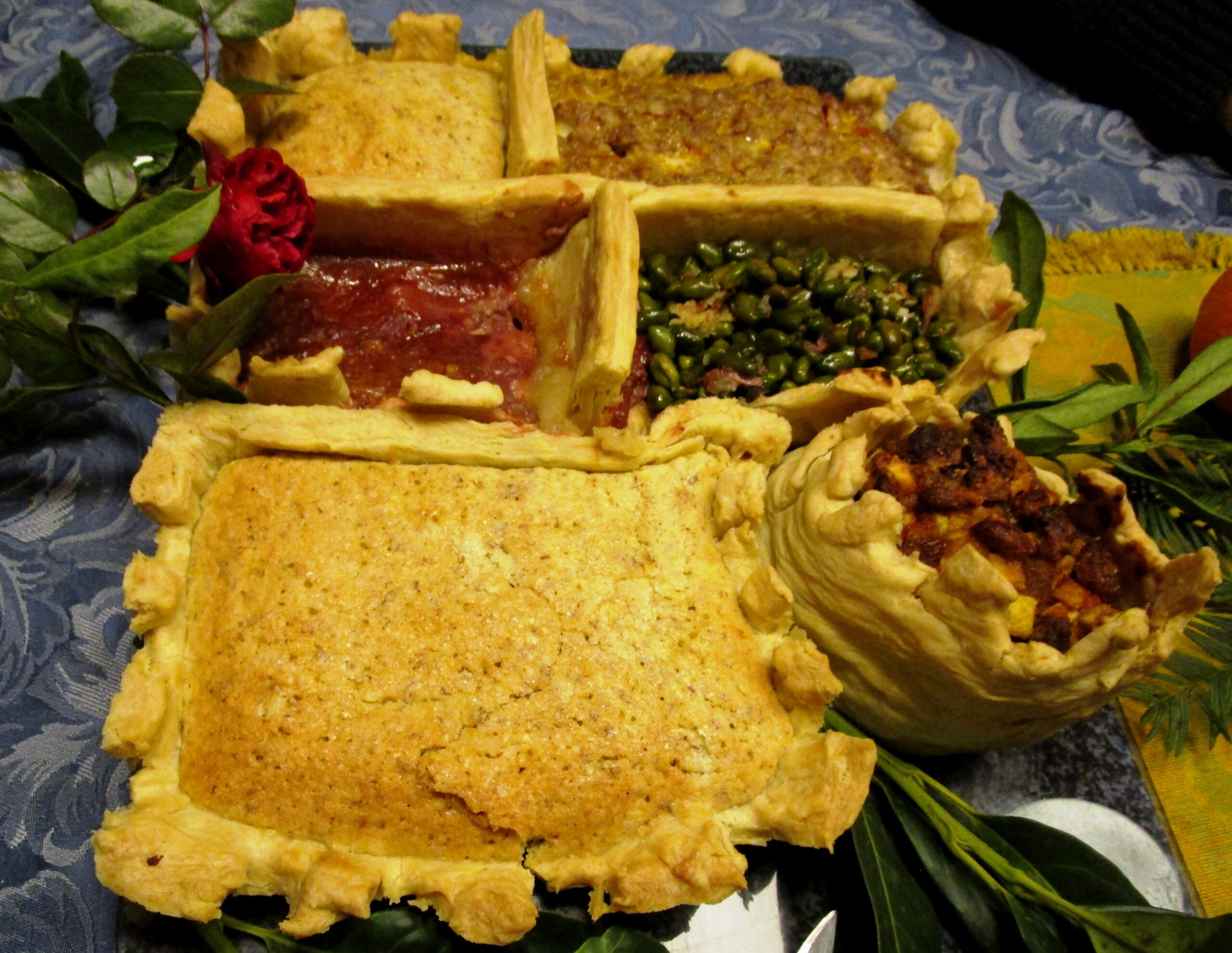

Yet further drivel about something you’ve just read about. Obvious lack of research.
Here in England, we call it black pudding, not blood pudding! Sometimes called blood sausage, but not blood pudding. Please get it right.
Adding saffron and the medieval reference is a feeble attempt to make the dish sound posh. It isn’t posh; and your attempt to “upgrade” black pudding is condescending for people today who eat it as a substitute when they cannot afford meat.
Maybe popular in some part of Scotland and Ireland, but not in England, where a significant proportion require Halal.
So calling this “English” is far from true.
Hello Wesley,
I grant you that the English use the term “black pudding,” but the English cooking school I attended (in Newcastle) used both terms, “blood pudding” and “black pudding.” The saffron is indeed part of the recipe, which comes from the Forme of Cury, compiled by the chefs of Richard II in the 1390s. The recipe calls for poudre forte, a spice combination that includes saffron. The cooking school and transcription of the recipes were overseen by the history department at Durham University, so I think I stand in good stead with both the name of the recipe and the ingredients. Thanks for commenting, though.
The chefs of Richard II might well have called blood pudding in 14 century, but we don’t live in the 14 century and now we call it black pudding.
Who’s we? Well, just about everybody except you and academic historians referring to 14 century text.
Just Google the following:
+”black pudding” +England – 2,070,000 hits
+”blood pudding” +England – only one hit (which goes on to refer to black pudding)
Ah, but that’s precisely the point — I was blogging about a 14th century recipe. But I will grant you your point about the name of the pudding. (We Americans do use the term blood pudding, however.)